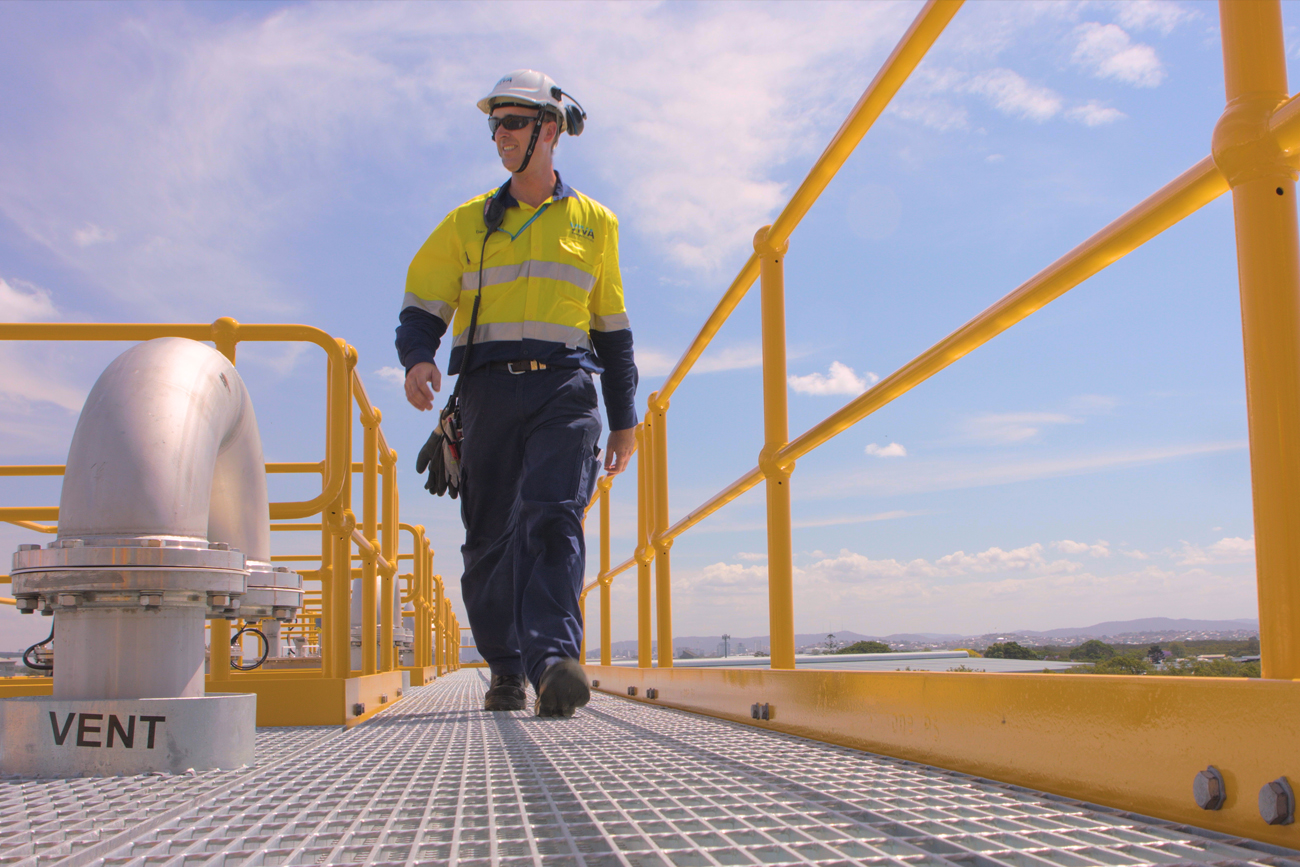To understand the gap that can exist between Work as Imagined (white line) versus Work as Done (blue safety line), the Pinkenba team used the commissioning of a fuel tank to trace how safety processes are actually applied in the field.

For Michael Potter – Maintenance Supervisor at the Pinkenba Terminal* – embedding safety in the workforce culture is a natural part of the workday.
“When events like Viva Energy’s ‘Celebrating Safety Day’ come along, we reflect that every day is already Safety Day here,” laughs Michael.
“But continuous improvement is crucial; it’s important to refresh, reset and avoid safety complacency.”
Michael says while it's easy to focus on maintenance processes on site, taking the time to also consider how operational procedures are safely applied in the field is crucial.
“It’s important to stay proactive on safety and look for new ideas from our people in the field – not just the ones designing the processes, but those performing the processes as well,” he says.
“How we communicate and collaborate is at the heart of a safe workplace. Introducing the idea of being a Master of the Blue Line – controlling how you’re actually performing a task on site – helps our teams know their risks and gives them a simple way to talk about them and be safe.”
What is the blue line?
The Master of the Blue Line concept was developed by safety expert Dr Todd Conklin. It is based on the premise that there is always a deviation between “Work As Imagined” and “Work As Done” – and that people are masters at managing this constant deviation and making corrections in their working environment.
The gaps between Work As Imagined and Work As Done are often where safety is being applied; it’s where people are continually detecting and correcting issues. If left unchecked, these deviations can create safety issues.
To support staff to become a Master of the Blue Line, Viva Energy developed a Work Insight tool to track the gaps between how we think work should happen versus how it is completed.
Knowing your risks and tracing your blue line
Tracing Work As Imagined (white line) versus Work As Done (blue line) compares the process and procedures for a task with how it’s actually performed in the field.
“In the field, operational staff go above and below that white line regularly. They’re adding or streamlining steps to stay safe and efficient and their own blue line tracks that commitment,” says Michael.
“But if performance is deviating away from that white line, we need to be across why the procedure may not be fit-for-purpose, improve it, train people in any new procedures and get back to being Masters of the Blue Line.”
Tracing the blue line through the commissioning of a fuel tank
Like a lot of safety models, the best place to show them in action is out in the field. Two site operators performed a Work As Imagined (white line) versus Work as Done (blue line) analysis of a tank commissioning activity. Bulk lubricant tanks are changed over onsite using a six step commissioning process.
“Everything was on the table from the start – what assumptions did we bring to it? What weren’t we seeing that was open to change or improvement?” says Michael.
The team worked through each step, tracking where work was different to the procedures and either fell below the white line standard, and where the blue line reflected safety excellence.
“There’s always room for improvement in safety – but we were also doing some things better than we imagined,” Michael says.
“Demonstrating the blue line concept in the field created a clear link for our people between planning and completing tasks and procedures and how they’re used in the field. They can see for themselves that we don’t leave their safety to chance.”
A new perspective
Demonstrating tasks in the field has given Michael and his team a renewed commitment to approaching maintenance and operational tasks by being mindful of Mastering the Blue Line.
“It’s important we work as a team. When risk assessments are being carried out, we involve the people carrying out those tasks for their on-the-ground opinion,” Michael says.
“If I’m writing a permit or a procedure at a desk, I ask myself - is this how it will actually be performed in the field?”
Michael’s tips for strong workplace safety
- Get to know your worksite and your people – ask questions and listen
- Find the resources that work for you – the right work insights tool can prompt you to ask the right questions around risk assessment
- Stay approachable – reassure staff they can be open about safety without judgement. It’s OK to speak up about an unsafe process or talk through how things are done on the ground
Speaking up about safety
If something feels off in the workplace or if they have a new idea, Michael says talking to your supervisor is the first step.
“Talk to someone you feel comfortable with, and don’t be afraid to ask questions about processes,” he says.
“Silence can be a real killer in our industry. There really is no such thing as a dumb question if someone’s safety is at stake. Working together means we can identify any unknown risks on site and send everyone home safely at the end of each day.”
*Michael Potter now works within Viva Energy’s South Australian Operations.